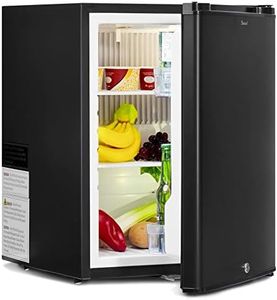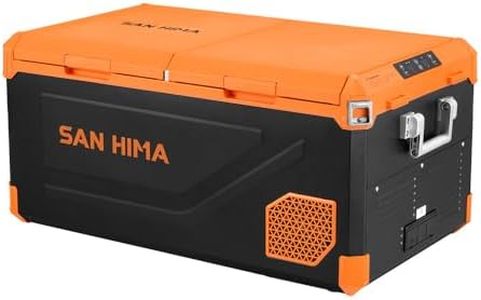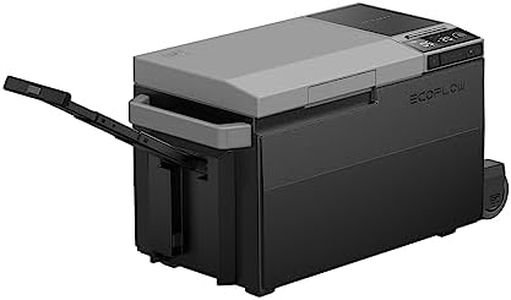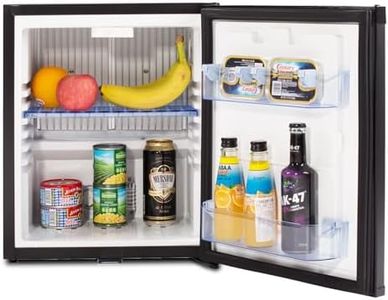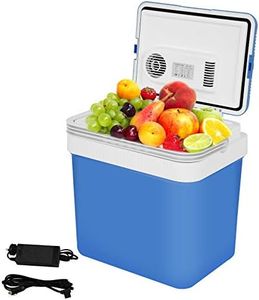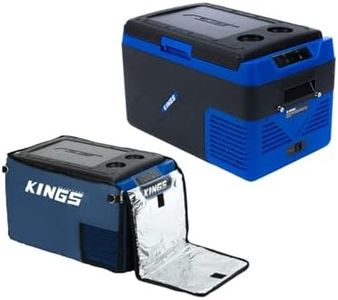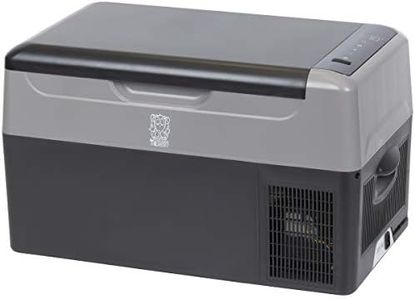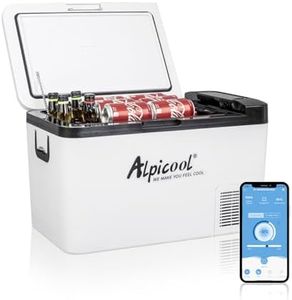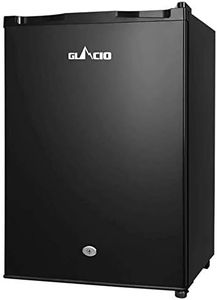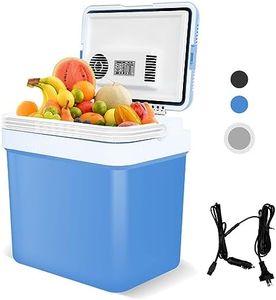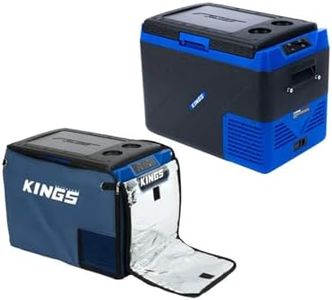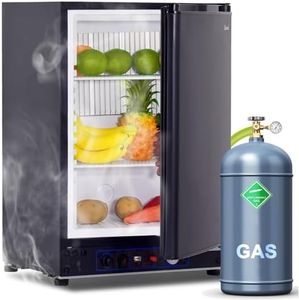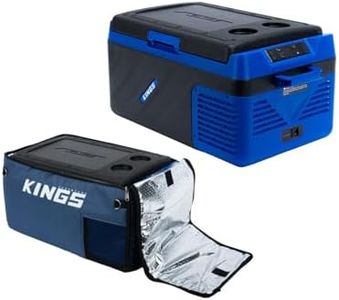We Use CookiesWe use cookies to enhance the security, performance,
functionality and for analytical and promotional activities. By continuing to browse this site you
are agreeing to our privacy policy
10 Best Camping Fridges
From leading brands and best sellers available on the web.Buying Guide for the Best Camping Fridges
When it comes to buying a camping fridge, the goal is to keep your food and drinks fresh, cold, and safe while you're off the grid. Since you'll be using it outdoors and possibly far away from a power source, the right camping fridge should fit your personal camping style, the size of your group, and how much you like to bring along. Learning about the main features and how they affect your experience will help you make a choice that ensures hassle-free trips and great meals.CapacityCapacity tells you how much the fridge can hold, usually measured in liters. It's important because this determines whether you'll have enough space to store all your food and drinks. Small fridges (under 30L) are ideal for solo or very short trips, providing enough space for essentials. Medium fridges (30-50L) suit couples or small families for a weekend getaway. Large fridges (over 50L) are best for groups, extended trips, or if you need to store lots of perishable items. To pick the right size for you, think about the number of people on your trips, how long you stay out, and how much fresh food you prefer to take. If you value compactness and travel light, a smaller unit can be better; but if you need to feed a group or stay out longer, go bigger.
Power SourceCamping fridges can usually run off multiple power sources, such as a car battery (12V DC), household mains (240V AC), or sometimes gas. This spec is important because it decides how easy it is to keep your fridge running, depending on where you camp. For car-based trips and short stays, 12V compatibility is essential, while mains power is handy at powered camp sites. Gas options work well in remote areas without electricity. Choosing which power source is best depends on your usual trip style: for road trips, prioritize 12V; for campsites, make sure it plugs into AC power; and for remote, unsupported locations, consider gas or a model with multiple options.
Energy ConsumptionEnergy consumption indicates how much power the fridge uses to keep things cool. This matters because when running off batteries or solar, higher consumption means you'll need more power to keep it running, which can be a challenge. Low consumption fridges are best for trips where you want to run the fridge longer from a car battery or small solar set-up, while higher consumption might be fine if you're at a powered location or only running the fridge occasionally. Check for energy ratings or average amps per hour, and pick a fridge whose consumption matches your power set-up and how long you plan to stay off-grid.
Temperature Range and ControlThis shows how cold the fridge can get and whether you can set the temperature precisely. It's important because some camping fridges double as freezers, and precise control can mean fresher food and safer storage, especially in hot weather. Basic models may only offer cooling, while more advanced ones can reach freezing temperatures or have dual zones for fridge and freezer use. If all you need is to chill drinks and essentials, a standard range will do; but for storing raw meat or ice cream, or if you camp in very hot areas, look for models with lower minimum temperatures and fine controls.
Build Quality and InsulationBuild quality includes the strength of the outer casing, hinges, handles, and insulation, which impacts durability and cooling efficiency. This matters because camping fridges can take a beating on rough roads and need to keep things cold even as temperatures rise outside. Well-insulated fridges with robust construction are better for rough trips and hot climates, as they'll use less power and last longer. If your trips are mostly to gentle, powered campsites, less ruggedness may be okay, but for adventure and overland trips, invest in sturdier construction and thick insulation.
PortabilityPortability covers how easy a fridge is to move and carry, which depends on its size, weight, shape, and features like handles or wheels. It's important because hauling a heavy or awkward fridge long distances from your car to your campsite can be a hassle. Lightweight, compact fridges are easier to move, but may offer less space. Larger models with built-in wheels and sturdy handles can balance capacity and ease of movement. If you often change locations or need to carry your fridge over uneven ground, focus on portability; if it stays in your car or camp, this may be less important.
Noise LevelSome camping fridges make noise while operating, especially compressor models. This is relevant if you're a light sleeper or use the fridge inside your tent or camper, as noise can disturb your rest. Silent or low-noise fridges are best for small, enclosed spaces or if quiet time is a priority; for outdoor use or in larger campers, noise may be less of an issue. Consider where you'll place the fridge and how sensitive you are to sounds at night to judge the importance of this spec for your needs.
